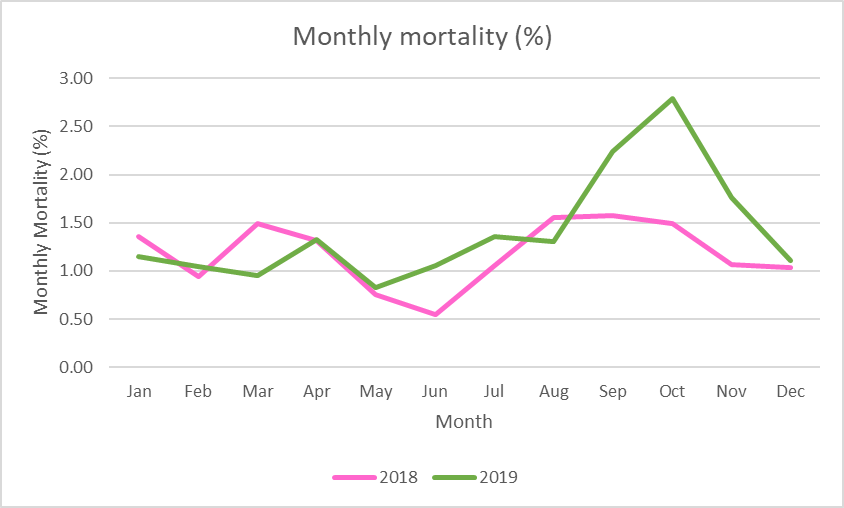Scottish farmed salmon survival rate at 98.6%

THE average monthly survival rate of Scottish farmed salmon last year was 98.60 per cent, new figures reveal.
The total is slightly sown on the previous year’s average of 98.83 due to environmental challenges seen at some farms during the third and fourth quarters of 2019, the Scottish Salmon Producers Organisation (SSPO) said.
From August onwards, salmon farmers worked hard to overcome planktonic blooms and increased water temperatures.
These directly and indirectly impacted on the health of some fish, with the largest reported cause of premature mortality among stocks resulting from gill health issues.
Hamish Macdonell, director of Strategic Engagement at the SSPO, said: ‘The Scottish salmon farming sector continues to invest and innovate in the management of such challenges. Fish health and welfare will always be our members’ top priority.
‘There are a number of initiatives underway to increase the health management toolbox available to Scotland’s fish farmers.
‘These are being complemented by focused research into understanding the impacts of recent environmental challenges, the Scottish 10-year Farmed Fish Health Framework and increased sector wide information sharing.’
Scotland will host the next Gill Health Initiative meeting in April, with representatives from Chile, Norway, the Faroes and Ireland expected to attend alongside their Scottish salmon farming counterparts.
Sea lice averages for 2019 were 0.54 adult female lice per salmon, up slightly from a seven year low in 2018 of 0.46.
The Scottish salmon sector is continuing to adopt a preventative approach to sea lice management, with medicinal spending decreasing in favour of an increase in the use of cleaner fish and mechanical treatments.
Investment in sea lice management more than doubled from 2015 to 2018, from £26 million to £61.7 million.
In the same period, the cost of medicinal treatments fell from £18.4 million to £9.7 million.
Last year, the SSPO moved from a three-monthly to monthly publication of survivability and sea lice averages.

